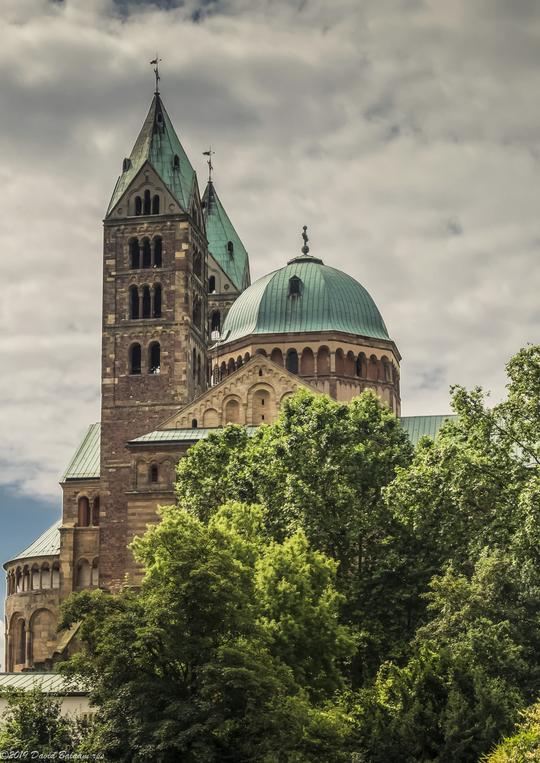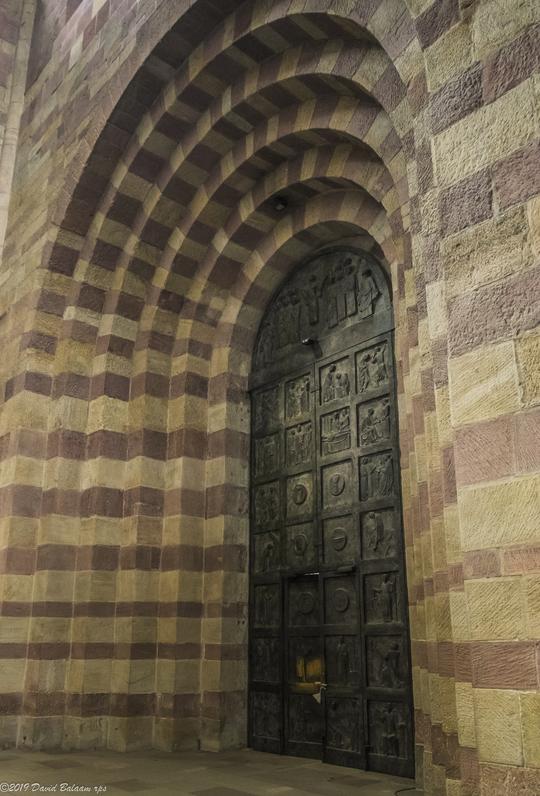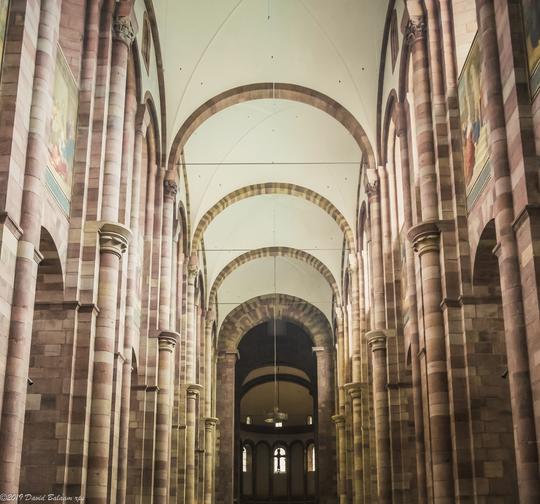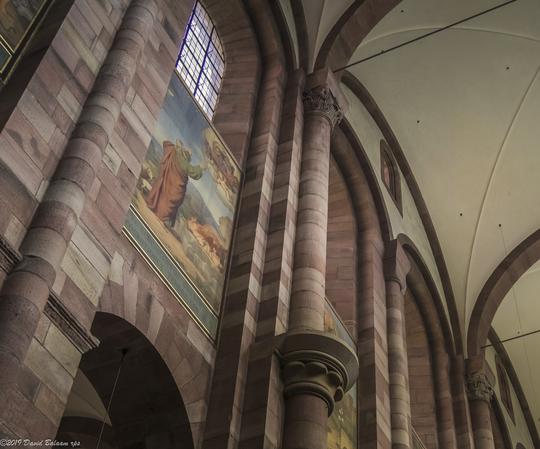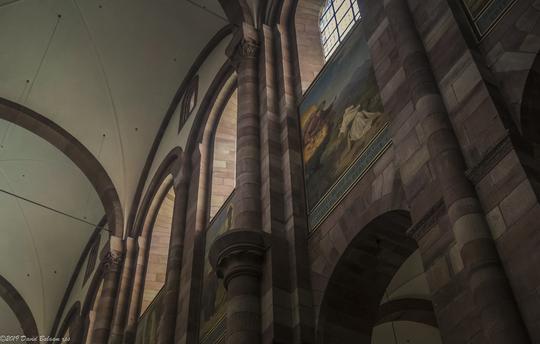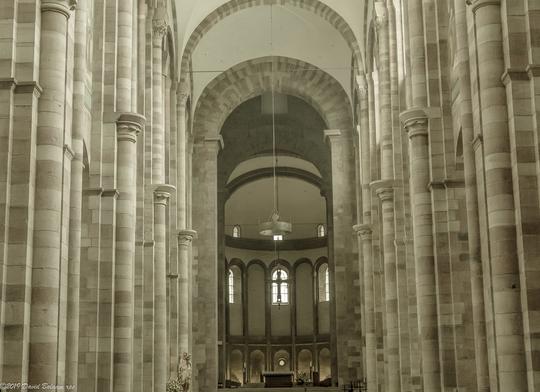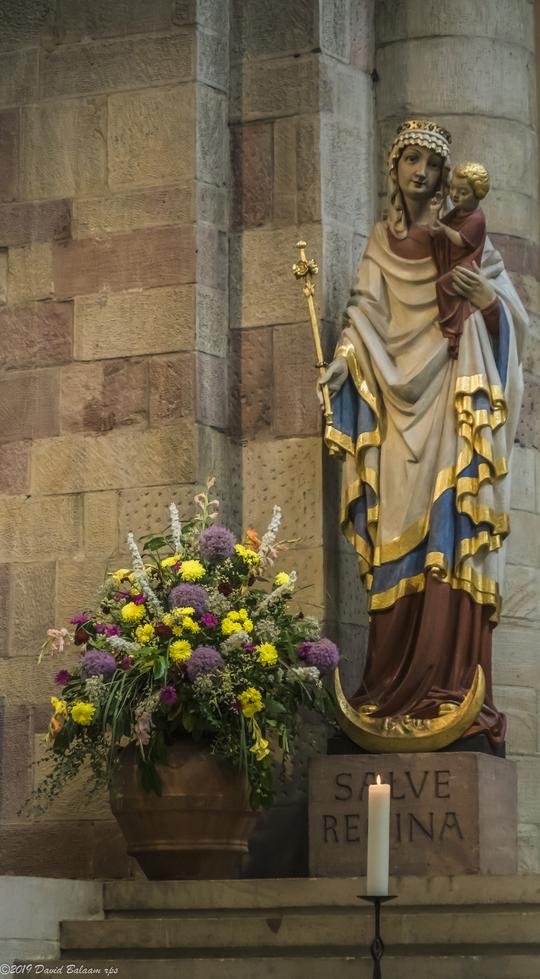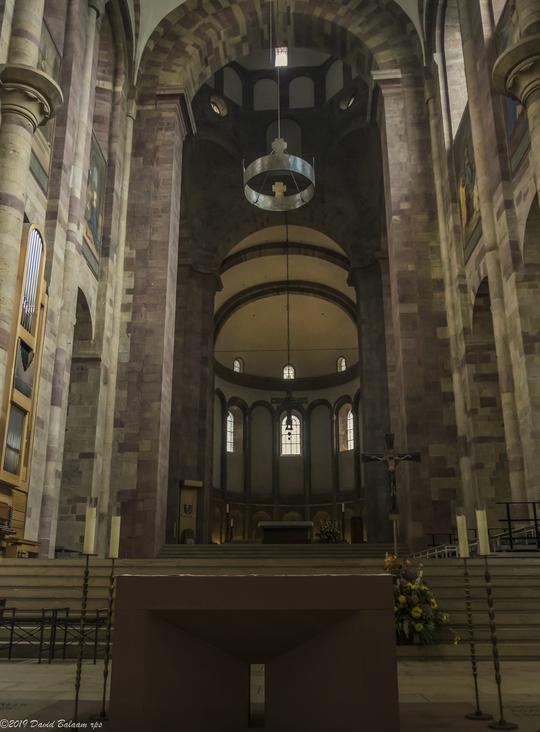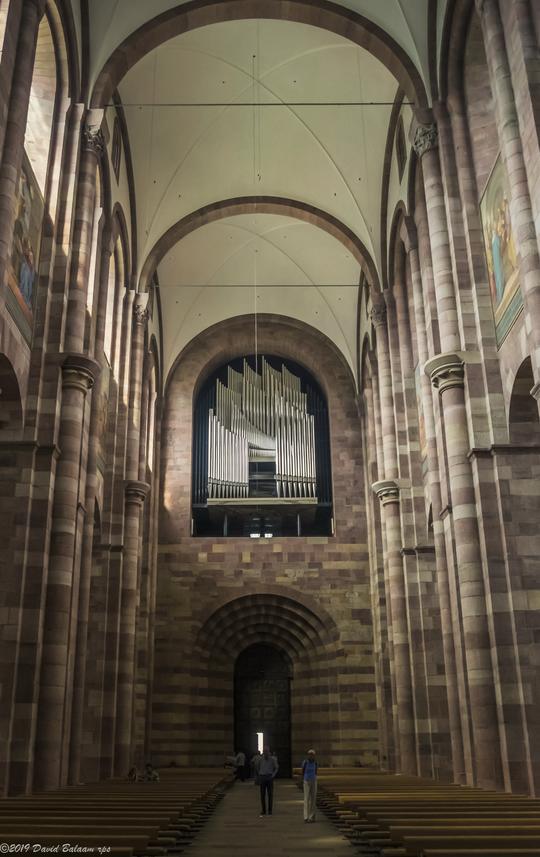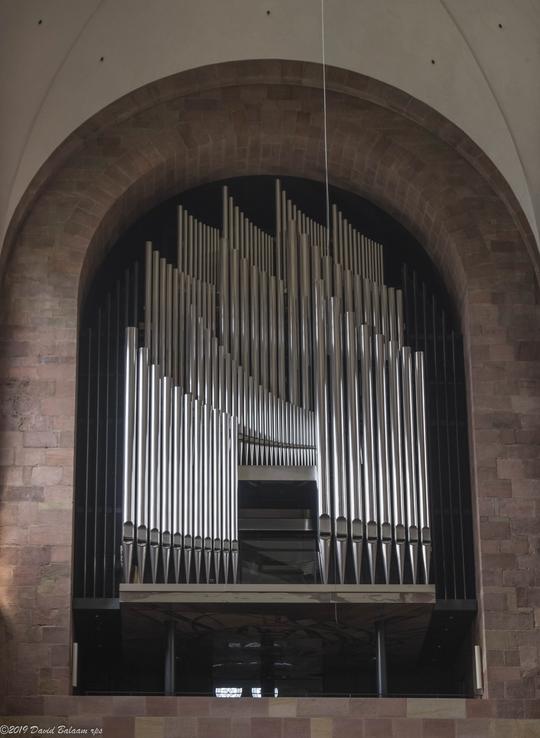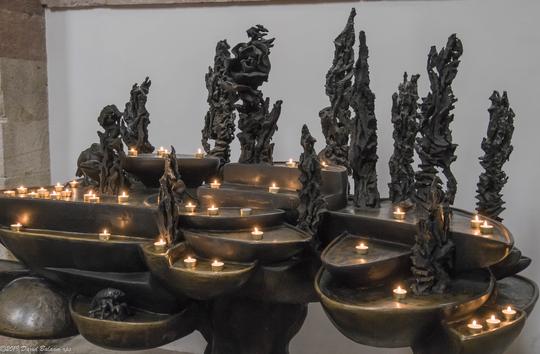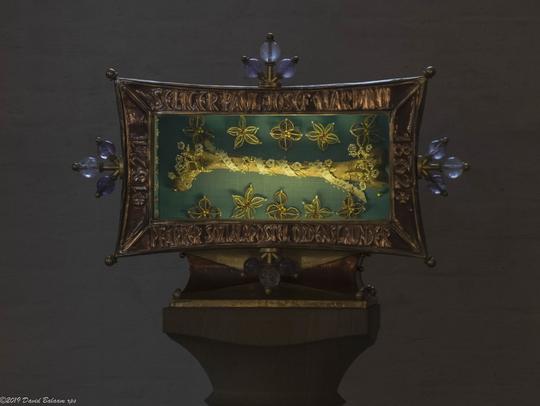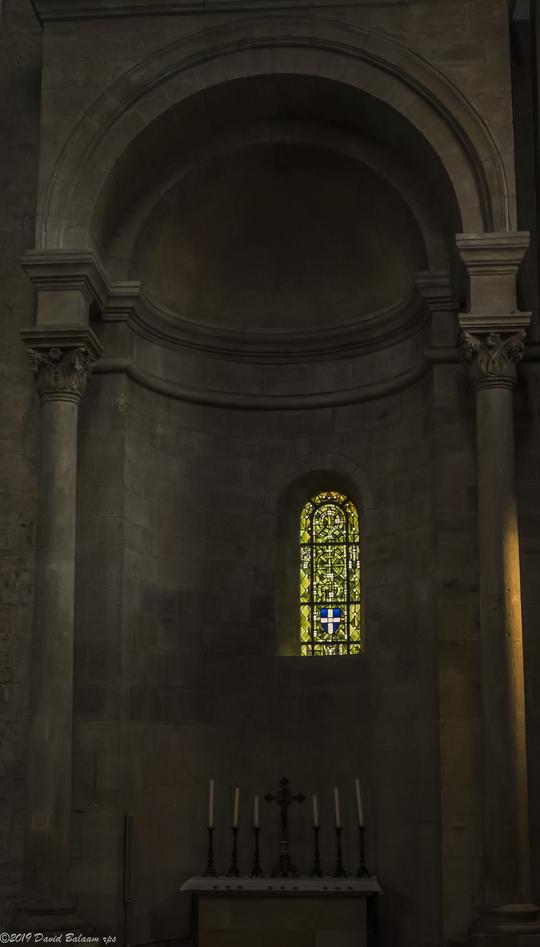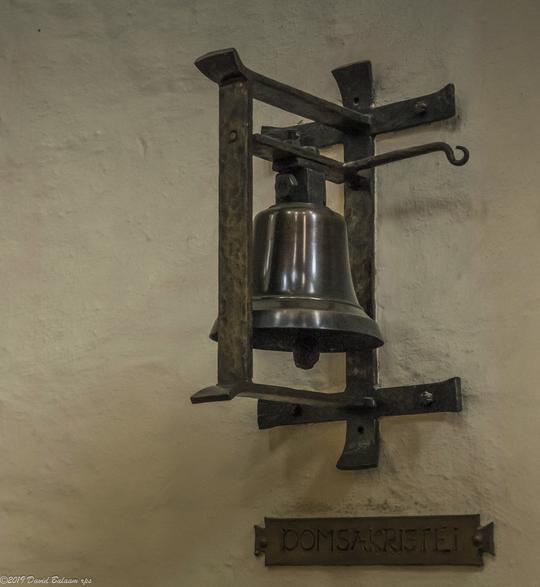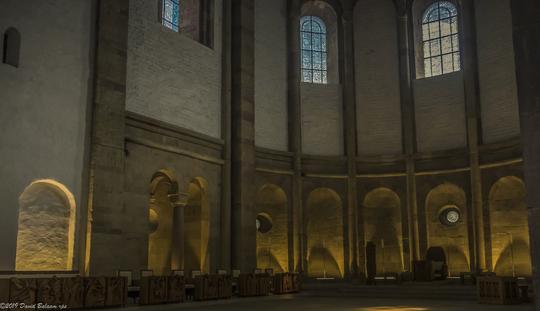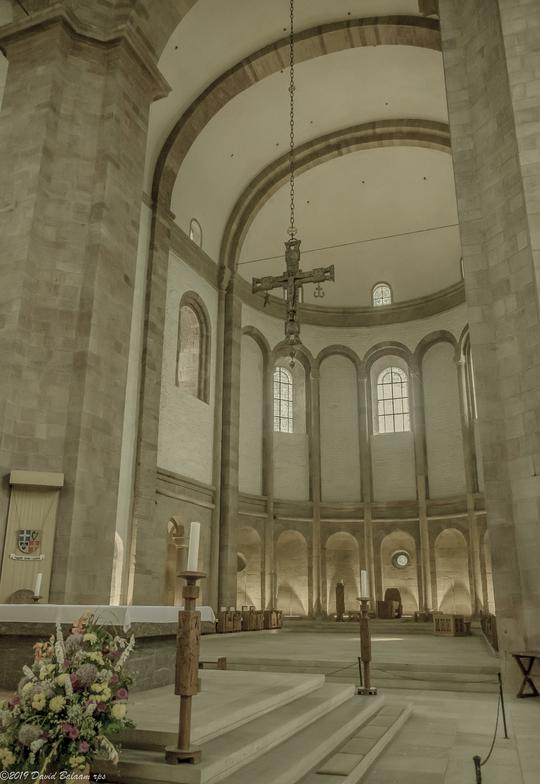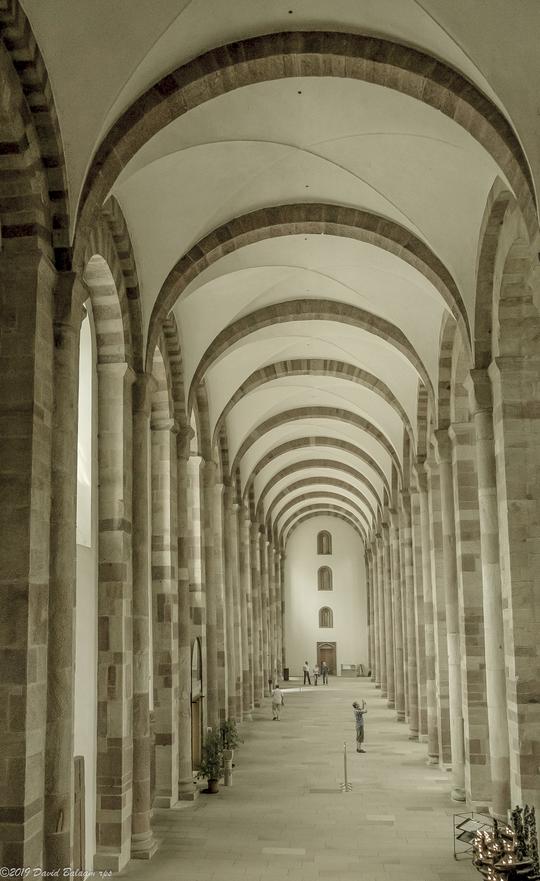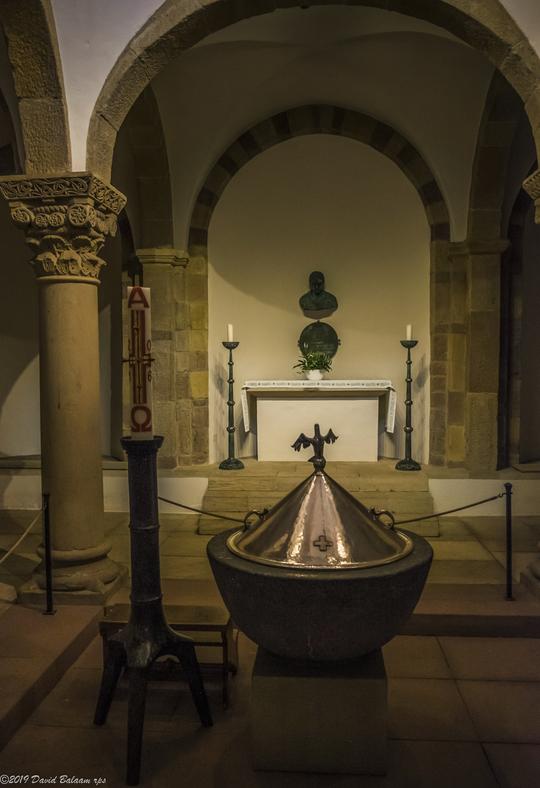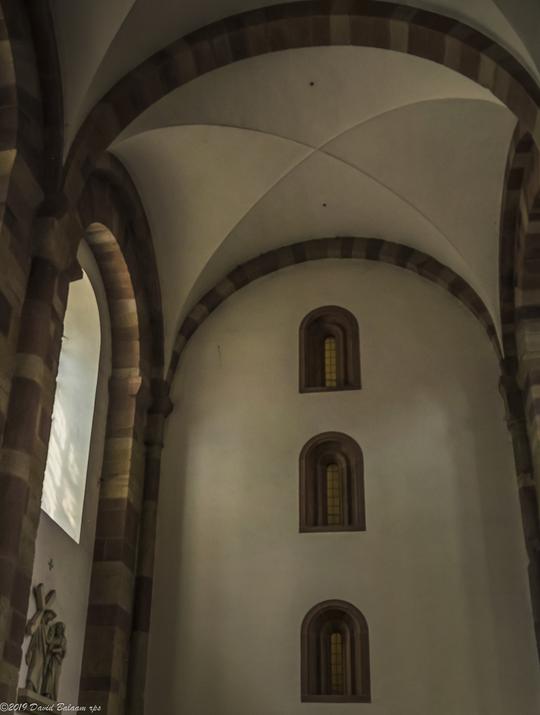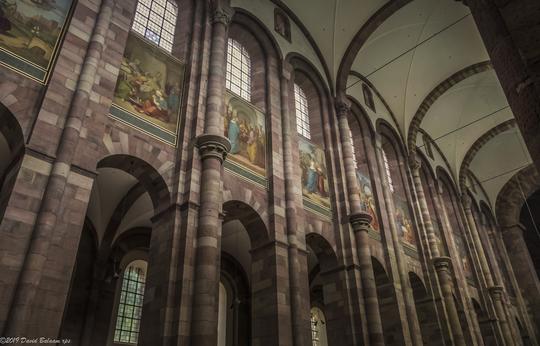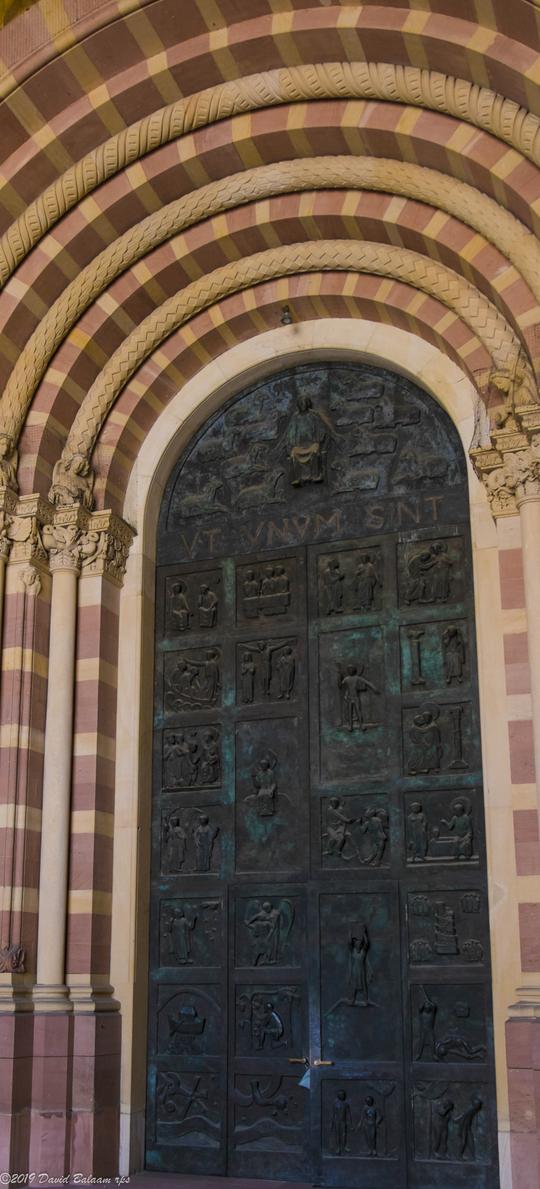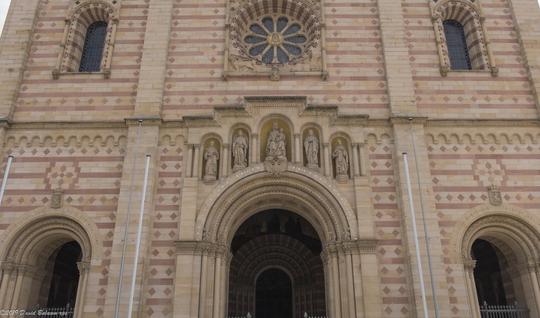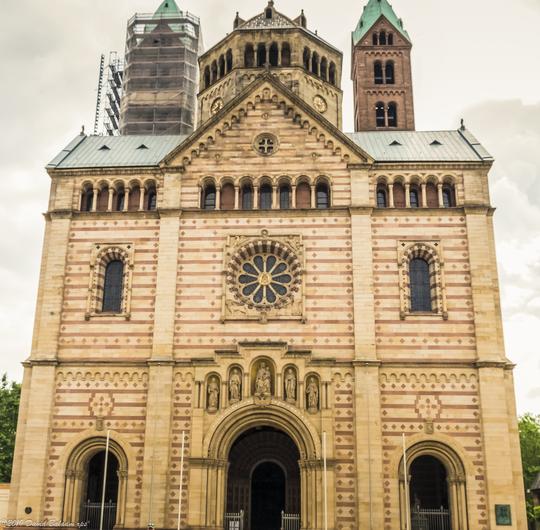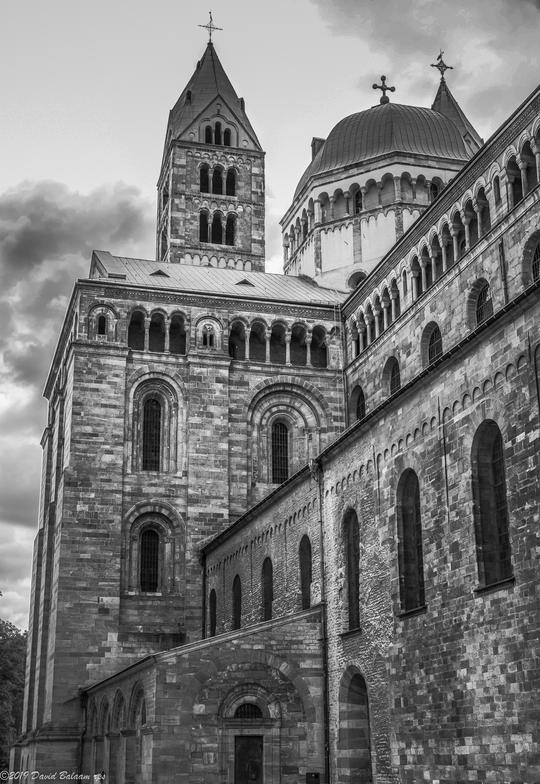Speyer Cathedral
In 1025, Conrad II ordered the construction of the Christian Western world's largest church in Speyer which was also supposed to be his last resting place. Construction began 1030 on the site of a former basilica which stood on an elevated plateau right by the Rhine but safe from high water. Along with Santiago de Compostela (begun 1075), Cluny Abbey (Cluny III, begun 1085), and Durham Cathedral (begun 1093), it was the most ambitious project of the time.[14] The red sandstone for the building came from the mountains of the Palatine Forest and is thought to have been shipped down the channelled Speyerbach, a stream running from the mountains into the Rhine at Speyer.[15] Neither Conrad II, nor his son Henry III, were to see the cathedral completed. Conrad II died in 1039 and was buried in the cathedral while it was still under construction; Henry III was laid next to him in 1056. The graves were placed in the central aisle in front of the altar. Nearly completed, the cathedral was consecrated in 1061. This phase of construction, called Speyer I, consists of a Westwerk, a nave with two aisles and an adjoining transept. The choir was flanked by two towers. The original apse was round inside but rectangular on the outside. The nave was covered with a flat wooden ceiling but the aisles were vaulted, making the cathedral the second largest vaulted building north of the Alps (after Aachen Cathedral). It is considered to be the most stunning outcome of early Salian architecture and the "culmination of a design which was extremely influential in the subsequent development of Romanesque architecture during the 11th and 12th centuries" https://en.wikipedia.org/wiki/Speyer_Cathedralhttps://www.dom-zu-speyer.de/en/
